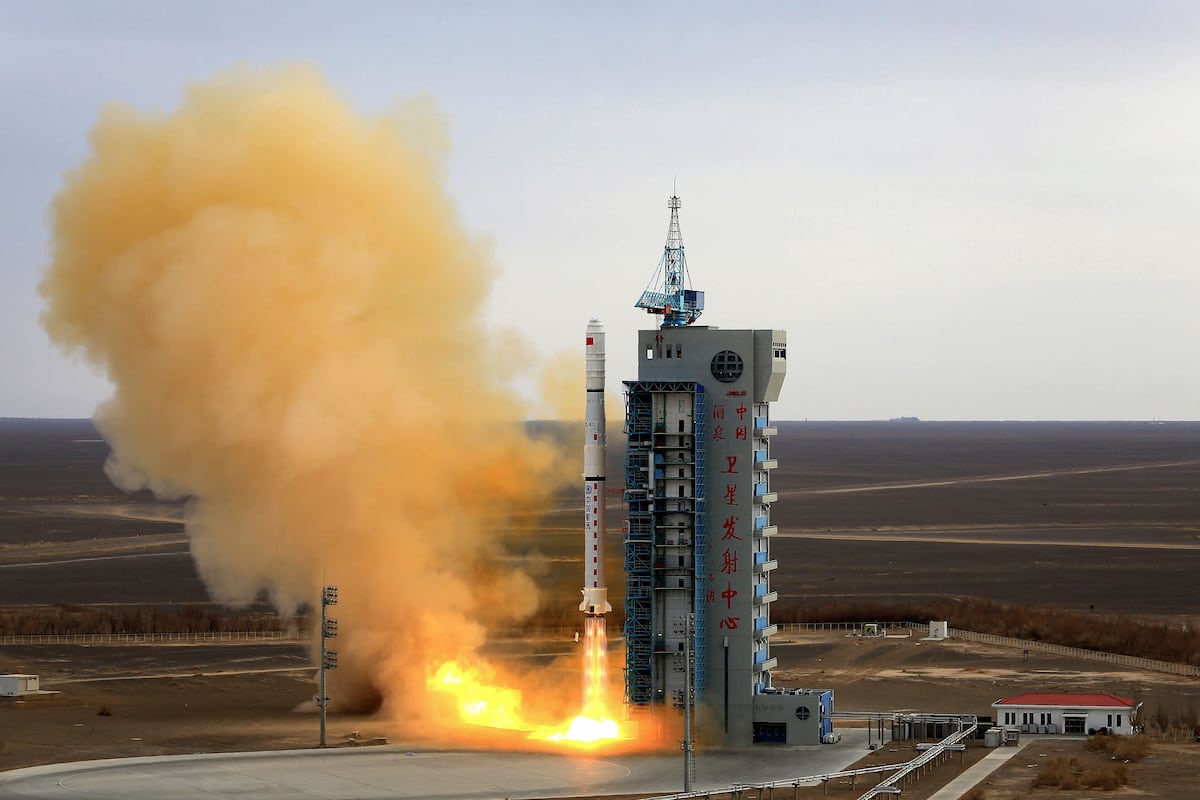In 2012, China had less than 100 satellites in orbit. Last month, the country launched its 1,000th spacecraft.
That milestone, according to the U.S. Space Force’s top intelligence officer, demonstrates the evolution and growth China’s space enterprise has undergone in the last decade. But for the Defense Department, the concern is as much about the mission of the spacecraft its adversary is operating as it is about the number of satellites.
“Those satellites are meant to sense, decide and track this force. And with extensively long shot ranges, they have created a formidable weapons engagement zone in the Pacific,” Deputy Chief of Space Operations for Intelligence Maj. Gen. Gregory Gagnon said Oct. 16 at the Association of the U.S. Army’s annual conference in Washington.
Gagnon earlier this year described the rapid buildup of the People’s Liberation Army’s space capabilities as a “strategic breakout.”
“An adversary arming like this is profoundly concerning,” he said in May at a Mitchell Institute event.
For the Space Force, countering China’s advancements in space is a mission in and of itself, Gagnon told Defense News in an interview on the sidelines of AUSA. The service will need more funding to build the satellites and sensors that can see, track and respond to the PLA’s growing in-orbit fleet, he said. It will also need to craft a clear operational vision from the service that the joint force and international partners can coalesce around.
While the Space Force has made progress in recent years articulating its role within DOD and building partners with industry, the service can only move fast if it has funding to maintain existing capabilities and support new missions, Gagnon said. Nearly half of the Space Force’s $30 billion budget funds “joint force enablers” like positioning, navigation and timing, missile warning and satellite communications that are critical to operations across the land, sea and air domains.
The service needs more funding to maintain those capabilities, Gagnon said, but if it’s going to protect against and respond to aggression from adversaries like China, it needs to expand its space domain awareness and counter-space systems.
“We have to change the architectures and satellites we use today to make them more resilient and effective. But in addition to that, we have to add new missions,” he said. “The aerospace forces of the PLA want to attack our capabilities in space. It’s part of their operational design and doctrine and we expect that they will do it. That’s why they’re building those weapons.”
Air Force and Space Force leaders have been pushing for the service to have a larger share of the Pentagon’s budget. Air Force Secretary Frank Kendall told Defense News in June that the service’s funding will need to double or triple in the coming years to support demand for space capabilities.
To garner more support from within DOD for its funding needs, the Space Force is drafting a more detailed “North Star” plan for how it will contribute to the joint fight over the next 10 to 15 years, Gagnon said. That force design work is happening now and will soon be led by the new Space Futures Command.
The plan will be informed by requirements from the other military services and will lay out what resources and capabilities the Space Force will need to meet those demands.
“We need that North Star, that plan, written so that they can see what our plan is and then be an advocate for us to gain additional money to make that a reality,” Gagnon said.
Gen. Michael Guetlein, vice chief of space operations, told Defense News this summer that the first iteration of that plan should be completed in the fall of 2025.
Courtney Albon is C4ISRNET’s space and emerging technology reporter. She has covered the U.S. military since 2012, with a focus on the Air Force and Space Force. She has reported on some of the Defense Department’s most significant acquisition, budget and policy challenges.
